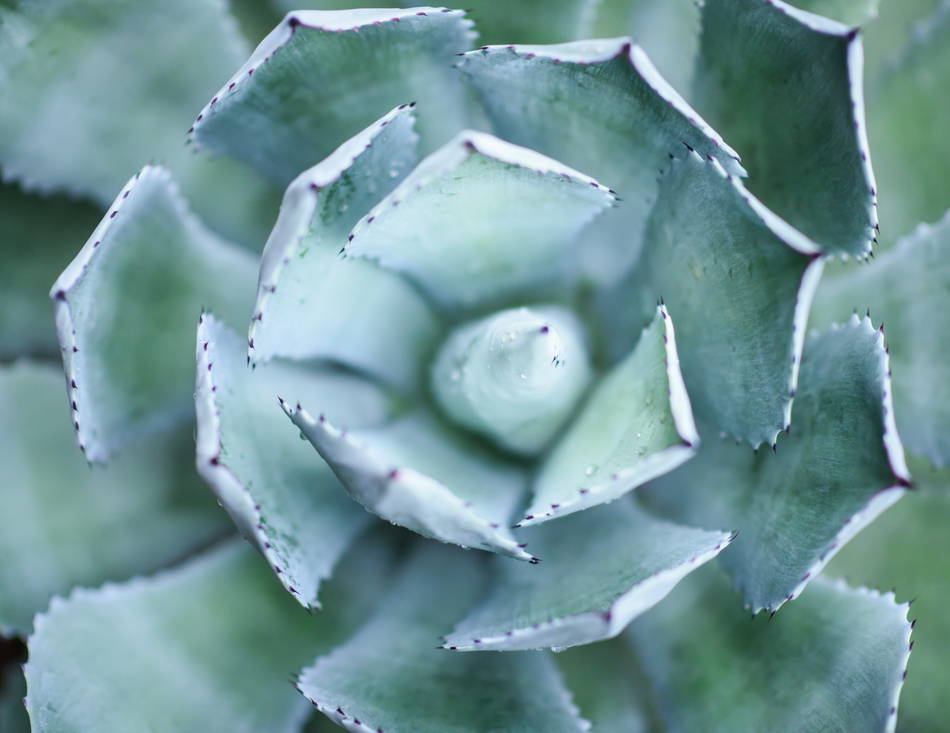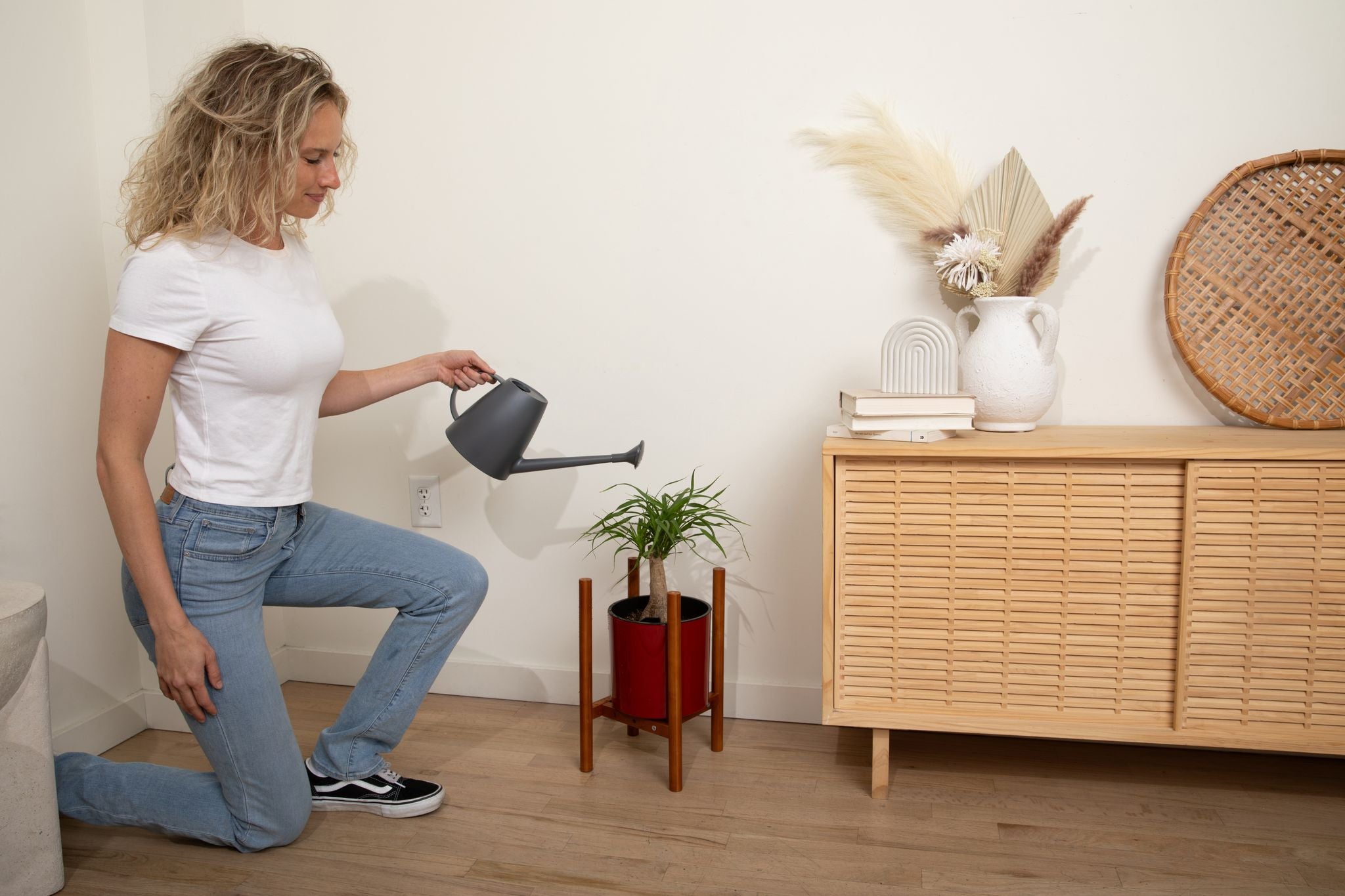Top 7 Tips for Growing a Healthy and Happy Agave Plant

closeup of agave plant
Agaves are enormously popular plants for outdoor ornamental plants and for indoor décor. The Agave succulent family has about 270 different varieties. Agaves are known for their leathery or succulent leaves with spiny tips, which come in a myriad of shapes, sizes, and colors. Like other plants, Agaves need the best succulent care in order for them to live their healthiest lives and grow to their fullest.
7 Growing Tips for Your Agave
While Agaves don’t need a ton of attention for optimal succulent care, here are 7 key growing tips for your Agave.
1. Choose the Right Potting Mix
Agave plants need sandy, gritty soil that percolates easily. If potted, make sure the potting mix moisture can escape so the Agave roots aren’t exposed to too much water. Use an Agave-designed succulent potting mix that will create a healthy soil environment for them, whether they are mature plants or starting out in life. You can also use an all purpose cactus and succulent potting mix for your Agave. These Agave-focused mixes are designed to enhance drainage. Peat moss, which is used in a lot of commercial mixes, can attract fungus gnats that can harm your plant. For that reason, we like coir or bark as our base instead.
2. Water Sparingly
Agave plants are very drought tolerant and do not need a lot of water to survive. They require medium to light watering needs. They need to dry out completely before rewatering. Yet, agaves planted in containers versus the ground will need more water. During the summer, Agaves may need watering once a week but during the winter only once a month. Whenever the soil feels dry, then your Agave should be watered.
3. Repot Every Year or So
While Agaves are relatively low maintenance plants, they should be repotted every year or so. They should have a potting mix refresh to get nutrients and a root trim. When you choose a new pot for your Agave, a high-quality, clear, plastic pot, is often a great choice, especially if you want to see the Agave’s root system. Plastic pots that are designed for Agaves maximize sunlight uptake while allowing you to see what's going on beneath the surface of your plant. Another good option is a stunning ceramic pot, specifically designed for succulents. Whatever pot you choose for the Agave plant, be sure that it is designed to drain well. Excess moisture from a poor-draining pot will cause your Agave to get sick.
4. Place in Full or Partial Sun Exposure
Agave plants thrive with full sun exposure or partial shade. If you grow your Agave indoors, be sure to place the succulent in a bright, sunny spot. The best windows for Agaves are west- or south-facing. Agaves usually need 6 hours of light. When they do not get enough sunlight, their leaves can turn yellow due to a lack of chlorophyll production. If your plant needs more indoor light, consider getting your Agave a grow light to help. They do love being placed outside from spring to fall. However, Agaves can get too much sunlight, causing them to get a sunburn.
5. Remove Spent Blooms
Agaves do flower, which are tabular in shape and have petals in shades of white, yellow, or green, and produce capsule fruit. Most Agave species are monocarpic, meaning that after an Agave plant blooms or produces fruit, the rosette will often die. But it will produce pups or offshoots from their base to replace themselves.
6. Feed Your Agave
Often needed in the spring, Agaves will benefit from some added fertilizer to their soil. Add some FEED ME! liquid fertilizer 1-2 times per month, mixing with ½ teaspoon per gallon of water. Also, if your tap or rainwater is low in alkalinity, consider using a fertilizer that can counteract it with specially-added micronutrients and macronutrients.
7. Look Out For Pests and Ailments
Like most plants, Agaves are not immune to getting a pest infestation or suffering from illnesses. Be on the lookout for any pests or any bacterial or fungal issues from overwatering or poorly drained soil, so you can mitigate the harm as quickly as possible. If your Agave has leaves that look sickly, are drooping, or turning yellow, they might have a pest infestation. The snout weevil burrows into the Agave leaves or into the base to lay its eggs. They basically drain the nutrients from the plant to feed themselves. Also, sap-suckling bugs can also harm Agave, including spider mites, aphids, and mealybugs. Adding cinnamon powder to your Agave is a natural yet effective way to eliminate the pesky pests as well as using products with BTI (Bacillus thuringiensis subspecies Israelensis) to help cure fungus and have gnat control.

